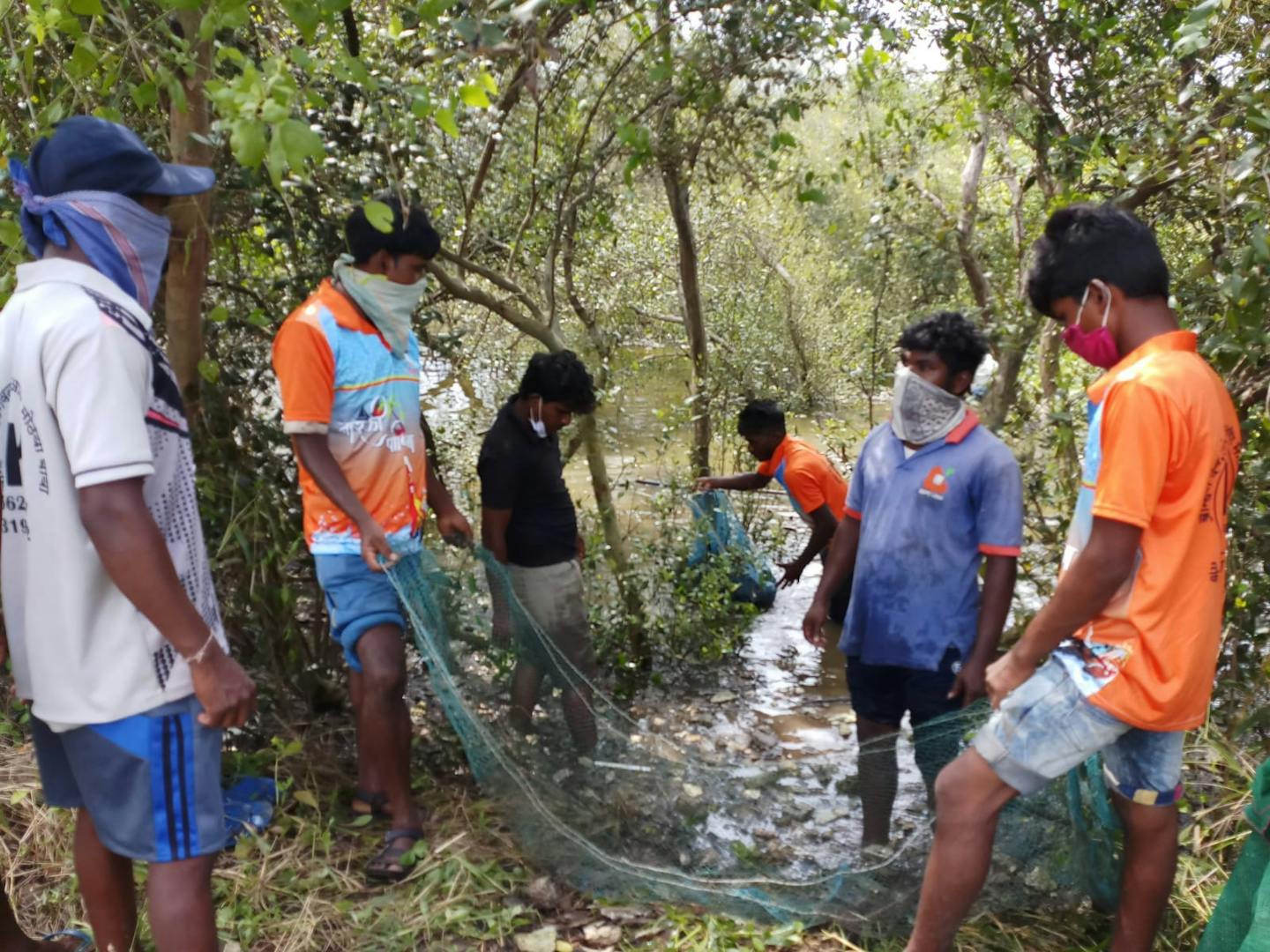How an Indigenous campaign is protecting India’s mangroves from vanishing
In July 2005, a storm brought Mumbai to its knees, with a record-breaking 944 millimeters of rain in 24 hours. Over 1,000 people lost their lives to the floods. Nandakumar Pawar, a local fisherman, and activist, somehow escaped the destruction.
While floods ravaged most of the city and destroyed people’s homes, Pawar recalls being surprised that his fishing village, Bhandup, a primarily Indigenous suburb, escaped the worst. Mangrove forests surround the village and cushion it from floods.
Community-led protection
Pawar decided that he had to do something to protect the mangrove cover in the city. He and other community members formed Shree Ekvira Aai Pratishthan, an initiative to preserve the city’s wetlands.
Since then, they have been conducting awareness drives and cleaning waste that settles in the mangroves. They are also vigilant about the developmental activities in the mangrove forest as they try to save the biodiversity hotspot.
Thanks to their efforts, they have managed to increase the survival rate of mangroves and, in the process, ensure the well-being of the ecosystem spread across 65 sq km of the coastline.

The former plantation of over 86,000 mangrove saplings undertaken in Charkop by the government’s mangrove cell, none of which survived. Image credit courtesy of Nandakumar Pawar
Previous deforestation
During the 1990s, the city lost nearly 40% of all its mangroves, mainly because of the development of housing, sewage treatments, and garbage dumps. In 2016, it was reported that a road-widening project near Jawaharlal Nehru Port Trust (JNPT) destroyed a two-kilometer stretch of mangrove trees, and the port construction wrecked the mudflats that were home to various wetland birds, including flamingos.
Several studies have pointed out that clearing mangroves in many areas of the city, particularly along the 18-kilometer-long Mithi river, was one of the main reasons for the unprecedented flooding of Mumbai in 2005. Erratic rainfall and sea-level rise due to climate change can increase the frequency of coastal flooding if this natural infrastructure is not preserved.
The significance of mangroves
“Mangroves hold the shoreland together. Without them, you keep losing land to the sea. Plus, they are very productive, especially to communities dependent on them for crab fishing and prevention of floods,” said Stalin Dayanand, a conservationist working with the nonprofit organization Vanashakti, based in Mumbai.
For local communities like Bhandup, mangrove conservation is crucial for the sustainability of coastal ecosystems and their livelihoods that depend on it. Furthermore, coastal communities are further vulnerable to disaster hazards as the sea rises. Pawar’s initiative seeks to strengthen the environmental infrastructure in coastal areas, like mangrove forests, which are the front line in dealing with potential disasters on the coast.
%20with%20fellow%20members%20of%20Shree%20Ekvira%20Aai%20Pratishthan%2C%20restoring%20and%20protecting%20mangroves%20in%20the%20city%20of%20Mumbai.%20Image%20credit%20courtesy%20of%20Pandurang%20Keni.jpeg)
Nandakumar Pawar (left) with fellow members of Shree Ekvira Aai Pratishthan, restoring and protecting mangroves in the city of Mumbai. Image credit: Courtesy of Pandurang Keni
Sacred to the community
Growing up in the 1960s, Pawar remembers how plentiful fishing was. “The fish would come to lay eggs on the roots of mangroves that surrounded our backyard,” he reminisced.
Pawar was born into the Indigenous Koli community. The Koli view the mangroves as sacred and worship them as these ecosystems are breeding grounds of marine organisms on which they rely for food and livelihoods.
But over the years, Pawar has seen the number of fish reduced, mainly because the mangroves near the villages of Mumbai had been slowly dying. In the face of extreme weather, he decided to ensure their protection.
His first step was organizing awareness drives with local fishers. He, along with a few volunteers from his community, engaged with fishing villages to eradicate harmful activities such as overfishing and cutting of mangroves.
He also organized cleaning drives to allow the mangroves to heal naturally and grow. Previous government projects planted more than 93,000 seedlings, but only a few survived.
Mangrove plantation is scientific, Pawar said. While government plantations were not considering the local biodiversity, his clean-up efforts allowed fish to interact with the seedlings and select the most fertile soil.
Guardians of the mangroves
Apart from restoration, Pawar and his co-campaigners also fight for policy change. In 2008, the group filed a petition in the Bombay high court to secure and protect over 1,000 hectares of mangroves, stretching from Airoli to Vashi in Mumbai. The court ordered the government to secure the stretch.
This was the first victory for Pawar. Every year since he has petitioned the court to secure more mangrove forests threatened by encroachment. He also led a case against the destruction and reclamation of over 20,000 hectares of wetlands for various projects in the Uran locality of Mumbai.
Pawar believes this project is a lifelong engagement for his community. “Now when they go out to fish, they act as mangrove vigilantes, spotting any illegal activity or waste dumping in the area,” he concluded.



